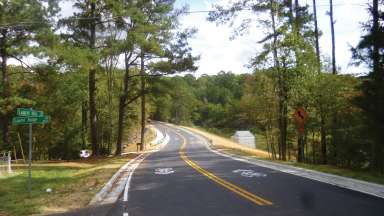Jump To:
Dam Classifications
Dams are based on the level of damage that a dam could cause if it fails or too much water flows downstream when it rains. Classifications are not based on how much of a risk there is of failure. See a list of City-owned dams.
| Classification | Definition |
|---|---|
| High-hazard Dam | A dam that causes severe damage and/or loss of life if it fails. This type of dam can still be considered high hazard after repairs are made to it. |
| Low-hazard Dam | A dam that causes low environmental and financial impacts and no loss of life if it fails. |
Staying Safe Near a Dam
Watch the video below to learn how to stay safe when near a dam. It's important to pay attention to emergency warnings (weather, dam safety, etc.) and avoid areas downstream of dams where flooding is more likely.
Staying Safe Near a Dam
Follow these easy tips to stay safe when you are near a dam spillway and structure.
4 Tips to Keep You Safe When You're Near a Dam
When you’re planning a trip to your favorite lake, don't forget that a dam may be nearby.
- Be aware of where the dam and spillway, which is the channel that carries excess water from the dam, are located on the lake or river (each body of water is different, but the structures should be easy to spot).
- While storing water in a dam provides many benefits for the community, containing large amounts of water can be hazardous. Dams may fail during or after large rainstorms. Please pay attention to emergency warnings in your neighborhood and for any areas located downstream of dams where flooding is more likely to occur.
- Keep a safe distance from all dam and spillway structures. You may get stuck in the current if you get too close to the top or bottom of the dam where water is released.
- In an emergency, call 911.
Dam Inspections
Did you know? Raleigh Stormwater inspects dams and storm drains before a storm. This includes checking that lake dams and spillways are properly maintained and working correctly and making sure storm drains are cleared of trash and debris to prepare them for increased rainfall.
Leading up to heavy rainfall, lake water from Lake Johnson is lowered to reduce flooding and keep people safe.
Studying Dam Conditions
We study dam conditions and determine which structures need to be repaired, replaced, or improved. Our goal is to make sure dams are operating correctly to minimize flooding hazards. See a list of City-owned dams.
We identify and prioritize dam repairs and improvements when stormwater issues cause flooding to public streets and impact public safety.
Do you have dam on your property? Learn how to maintain it.
